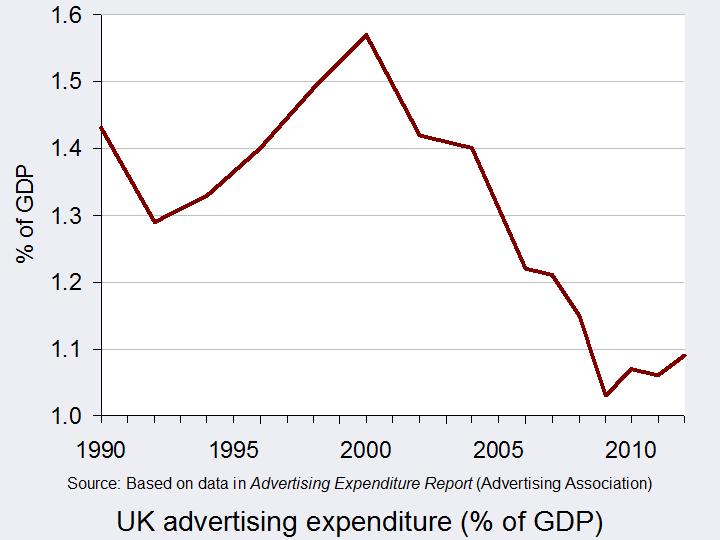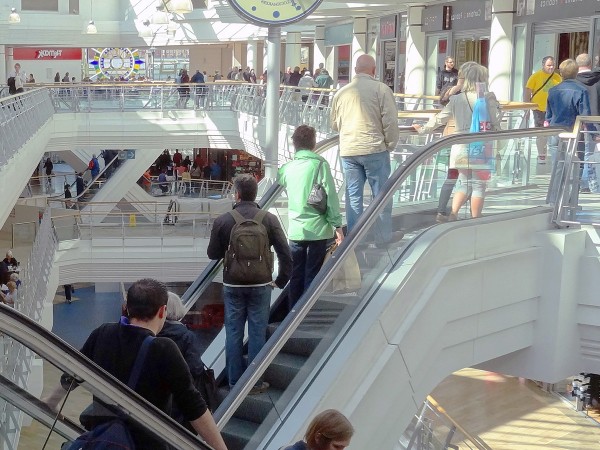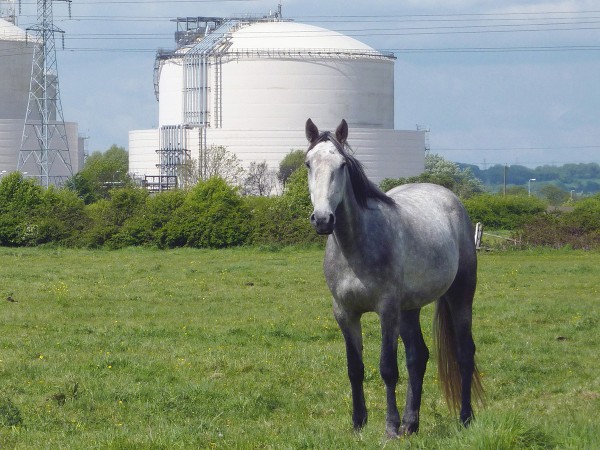 There are a number of surveys that attempt to measure the spending intentions of people in the run up towards Christmas. For example a recent study carried out by YouGov found that people in the UK planned to spend an average of £599 on presents for their family and friends. This represented a 5.8% increase on the previous year. Planned total spending on Christmas was estimated to be a staggering £22 billion.
There are a number of surveys that attempt to measure the spending intentions of people in the run up towards Christmas. For example a recent study carried out by YouGov found that people in the UK planned to spend an average of £599 on presents for their family and friends. This represented a 5.8% increase on the previous year. Planned total spending on Christmas was estimated to be a staggering £22 billion.
 Respondents to another survey, carried out by the hotel chain Travelodge, stated that on average they planned to buy presents for 12 people. This study also found that the average expected spend on each present was £28.70 – an increase of £1.70 on the previous year. A rather obvious question for anyone interested in economics is whether this is either a sensible or an efficient way of allocating resources. One way to think about how an economist might approach this issue is to ask yourself the following questions after you have opened a present on Christmas day.
Respondents to another survey, carried out by the hotel chain Travelodge, stated that on average they planned to buy presents for 12 people. This study also found that the average expected spend on each present was £28.70 – an increase of £1.70 on the previous year. A rather obvious question for anyone interested in economics is whether this is either a sensible or an efficient way of allocating resources. One way to think about how an economist might approach this issue is to ask yourself the following questions after you have opened a present on Christmas day.
• How much money do you think the person who gave you the present paid for it?
• Ignoring the sentimental value, if you had not received this present how much would
you be willing to pay to purchase it?
Exactly 20 years ago the economist Joel Waldfogel posed questions very similar to these to a group of 86 students studying an intermediate microeconomics module at Yale University in the USA. On average the respondents to the questions estimated that friends and family had spent $438 on  the gifts they had received that Christmas. Unfortunately their willingness to pay for these same gifts was $313 on average. Economists would argue that this is an example of economic inefficiency because the recipients’ valuation of the gifts – as measured by their willingness to pay – was only 71.5% of the price paid by the person who gave them the presents. This means that it is possible to make the person who received the gift better off without making the person who purchased the gift any worse off. This argument can be illustrated with a simple example.
the gifts they had received that Christmas. Unfortunately their willingness to pay for these same gifts was $313 on average. Economists would argue that this is an example of economic inefficiency because the recipients’ valuation of the gifts – as measured by their willingness to pay – was only 71.5% of the price paid by the person who gave them the presents. This means that it is possible to make the person who received the gift better off without making the person who purchased the gift any worse off. This argument can be illustrated with a simple example.
Assume you have purchased a Liverpool football club shirt as a present for Sir Alex Ferguson and it cost you £50! Rather surprisingly Sir Alex likes the shirt but would have only been willing to pay £20 if he was buying it for himself. Imagine now that you have given him £50 cash instead of the shirt. This would not make you any worse off – your cash outlay would remain unchanged. However, Sir Alex would now be able to spend the £50 cash in a way which would give him far more satisfaction than the Liverpool football shirt would have given him. Sir Alex can therefore be made better off without making you worse off. The present in this example generates a deadweight welfare loss of £30. Waldfogel concluded from his later research based on a larger sample of people that, on average, people’s valuations of their presents is about 90% of the money actually spent on them. If this figure is accurate, it suggests that over £2 billion will be wasted in the UK this Christmas.
The size of the deadweight welfare loss depends on how well the person who is buying the present knows or understands the preferences of the recipient. The closeness of age, friendship or family relationship are all likely to influence the accuracy of this knowledge. Interestingly, Waldfogel found that presents from grandparents to grandchildren were the most inefficient: i.e. the difference between the recipient’s valuation of the gift and the price paid for the present was the greatest. The study also found that grandparents were more likely to give their grandchildren cash gifts.
 Do economists always advise people to give cash as presents? Thankfully the dismal science can find some positive things to say about giving gifts. The previous analysis can be criticised in a number of different ways. It assumes that the recipients are perfectly informed about all the potential gifts that are available. If the person buying the present can find an item that the recipient was unaware of, then it is possible that economic welfare might be increased. It has also been assumed that the pleasure or value people obtain from an item is not influenced by who has purchased it. It may be the case that people place a greater value on an item when it is a gift from somebody else. In the previous example, perhaps Sir Alex would value the Liverpool shirt at £60 if you had purchased it for him as a present. The analysis has also ignored the possibility that the person buying the present derives pleasure from trying to find a gift that they think the person would like. Perhaps people feel a ‘warm glow’ when they see the happiness of somebody opening their present on Christmas day.
Do economists always advise people to give cash as presents? Thankfully the dismal science can find some positive things to say about giving gifts. The previous analysis can be criticised in a number of different ways. It assumes that the recipients are perfectly informed about all the potential gifts that are available. If the person buying the present can find an item that the recipient was unaware of, then it is possible that economic welfare might be increased. It has also been assumed that the pleasure or value people obtain from an item is not influenced by who has purchased it. It may be the case that people place a greater value on an item when it is a gift from somebody else. In the previous example, perhaps Sir Alex would value the Liverpool shirt at £60 if you had purchased it for him as a present. The analysis has also ignored the possibility that the person buying the present derives pleasure from trying to find a gift that they think the person would like. Perhaps people feel a ‘warm glow’ when they see the happiness of somebody opening their present on Christmas day.
 A final interesting economic explanation for buying presents is that they might act as an effective signal in a situation where there is asymmetric information. It can be argued that this is the case in relationships where people have private information about their true feelings towards one another. One way of communicating these feelings is by simply telling someone how you feel about them. However, this might not be an effective signal, as someone who does not have such strong feelings could say the same things as someone who does! However, by taking the time and trouble to buy someone a present that they really like, you are able to signal more effectively how you really feel about them. The signal can be particularly strong if the person buying the present really dislikes shopping. Just giving someone cash, or not taking the time to buy a present the person really likes, might signal that you simply could not be bothered to exert the effort because your feelings are not that strong. The potential consequences of giving your partner money are amusingly demonstrated in the following clip: The Economics of Seinfeld: What’s the right Gift to give; cash?
A final interesting economic explanation for buying presents is that they might act as an effective signal in a situation where there is asymmetric information. It can be argued that this is the case in relationships where people have private information about their true feelings towards one another. One way of communicating these feelings is by simply telling someone how you feel about them. However, this might not be an effective signal, as someone who does not have such strong feelings could say the same things as someone who does! However, by taking the time and trouble to buy someone a present that they really like, you are able to signal more effectively how you really feel about them. The signal can be particularly strong if the person buying the present really dislikes shopping. Just giving someone cash, or not taking the time to buy a present the person really likes, might signal that you simply could not be bothered to exert the effort because your feelings are not that strong. The potential consequences of giving your partner money are amusingly demonstrated in the following clip: The Economics of Seinfeld: What’s the right Gift to give; cash?
Perhaps giving presents instead of cash is an economically efficient way of dealing with situations where asymmetric information is potentially an important issue.
Articles
British households plan to spend £820 on Christmas YouGov (11/11/13)
Brits ‘to spend more on Christmas presents this year with average gift costing £28.70’ Daily Mirror (13/11/13)
Christmas shoppers hit the sales in biggest spending spree since the recession began Daily Express (15/12/13)
Bah, Humbug The Joy of Economics: Making Sense out of Life, Robert J. Stonebraker (22/05/13)
What many economists don’t understand about Christmas Quartz, Tim Fernholz (19/12/13)
The Economics of Gifts Greg Mankiw’s Blog (24/12/06)
The case against Christmas presents The Guardian (19/12/13)
Grinchonomics or how the Economist stole Christmas Economics in Plain English (16/12/10)
The true value of the 12 days of Christmas reveals giving cash may be the most cost-effective gift Perth Now, Jessica Irvine (21/12/13)
Questions
- Explain what is meant by the term ‘allocative efficiency’. Use a diagram to help illustrate and explain your answer.
- Draw an indifference curve diagram to illustrate the potential welfare costs of giving presents instead of cash.
- Assess whether giving someone a gift card is more economically efficient than giving them a present.
- Using a simple numerical example, explain how economic welfare could be higher if someone buys a present that the recipient was unaware of. What factors might you have to take into account when carrying out this economic analysis?
- Explain what is meant by the term ‘asymmetric information’. Provide a number of examples to help illustrate your answer.
- What properties must a signal have if it is to successfully overcome problems caused by asymmetric information?
 Adverts are increasingly diverse, ranging from families using various products and promoting their qualities, to a gorilla drumming, a horse dancing and a monkey drinking tea! But, how important is advertising to a product’s brand. Does it have a positive effect on sales and profitability?
Adverts are increasingly diverse, ranging from families using various products and promoting their qualities, to a gorilla drumming, a horse dancing and a monkey drinking tea! But, how important is advertising to a product’s brand. Does it have a positive effect on sales and profitability?
The key role of advertising is to sell more products and many firms spend a huge amount on advertising campaigns. Indeed, over £16bn was spent on advertising in 2012. Given that the economy is still vulnerable and many firms have seen their sales and profits decline, this is a huge amount. Procter & Gamble spent over £200 million, British Sky Broadcasting spent £145 million and Tesco spent £114 million in 2011.
 Advertising increases consumer awareness of the product and its features, but also actively aims to persuade people to purchase the product. By differentiating the product through adverts a company aims to shift the demand curve to the right and also make it more inelastic, by persuading customers that there are no (or few) close substitutes.
Advertising increases consumer awareness of the product and its features, but also actively aims to persuade people to purchase the product. By differentiating the product through adverts a company aims to shift the demand curve to the right and also make it more inelastic, by persuading customers that there are no (or few) close substitutes.
 Since the start of the economic downturn in 2008, advertising expenditure has fallen, as companies have seen a decline in their budgets. From a high of £18.61 billion in 2004, the Advertising Association found that it fell to £14.20 billion in 2009 at constant 2008 prices. In the last few years, advertising expenditure has remained at around £14.5 billion. But, is cutting back on advertising a sensible strategy during a recession? Of course budgets are tight for both firms and consumers, but many suggest that media-savvy firms would actually benefit from maintaining their advertising. By doing so firms could take advantage of weaker competitors by increasing their market share and establishing their brand image in the long run.
Since the start of the economic downturn in 2008, advertising expenditure has fallen, as companies have seen a decline in their budgets. From a high of £18.61 billion in 2004, the Advertising Association found that it fell to £14.20 billion in 2009 at constant 2008 prices. In the last few years, advertising expenditure has remained at around £14.5 billion. But, is cutting back on advertising a sensible strategy during a recession? Of course budgets are tight for both firms and consumers, but many suggest that media-savvy firms would actually benefit from maintaining their advertising. By doing so firms could take advantage of weaker competitors by increasing their market share and establishing their brand image in the long run.
 It’s also important to consider another link between economic growth and advertising. Research suggests that advertising can be an important factor for economic growth. A three-year study undertaken by the Advertising Association and Deloitte, commencing in January 2013 suggests that for every £1 spent on advertising in the UK, £6 is generated for the wider economy. Based on these predictions, the estimated £16bn that was spent on ad campaigns in 2011 added over £100 billion to the UK’s GDP.
It’s also important to consider another link between economic growth and advertising. Research suggests that advertising can be an important factor for economic growth. A three-year study undertaken by the Advertising Association and Deloitte, commencing in January 2013 suggests that for every £1 spent on advertising in the UK, £6 is generated for the wider economy. Based on these predictions, the estimated £16bn that was spent on ad campaigns in 2011 added over £100 billion to the UK’s GDP.
 So, perhaps encouraging more advertising is the answer to the UK’s economic dilemma. This is certainly the opinion of Matt Barwell, the consumer marketing and innovation director of Diageo Western Europe, who said:
So, perhaps encouraging more advertising is the answer to the UK’s economic dilemma. This is certainly the opinion of Matt Barwell, the consumer marketing and innovation director of Diageo Western Europe, who said:
People fundamentally believe in advertising but a lot of the conversation focuses on negative elements. People rarely get the opportunity to talk about the positive role advertising plays in terms of wealth creation, exports and the social benefits that it provides. These are all things that many of us take for granted.
If private firms can therefore be encouraged to boost their marketing campaigns, jobs may be created, demand for products will rise and with the help of the multiplier, the economy may strengthen. Advertising has both pros and cons and opinions differ on what makes a good advert. But, whatever your opinion of the role of advertising, it is certainly an important aspect of any economy. The following articles take a view of advertising.
Articles
Could we advertise ourselves out of recession? Marketing Week, Lucy Tesseras (31/1/13)
Advertising in times of recession: A question of value The Open University, Tom Farrell (13/3/09)
Recession spending on advertising and R&D Penn State, Smeal College of Business
Nothing to shout about The Economist (30/7/09)
UK’s payday lenders face restrictions on advertising Reuters (6/3/13)
Value claims improve advertising effectiveness in recessionary times Com Score, Diane Wilson (17/9/13)
Advertising in a bad economy About Advertising, Apryl Duncan
Advertising worth £100bn to UK economy The Telegraph, Graham Ruddick (31/1/13)
Can advertising be the motor that gets the struggling UK economy out of first gear? More about advertising (26/2/13)
Adverts ‘worth £100bn to UK’ Independent, Giddeon Spanier (30/1/13)
Report
Advertising Pays – How advertising fuels the UK economy Advertising Association & Deloitte (30/1/13)
 Advertising Pays – How advertising fuels the UK economy: Accompanying video presentation Advertising Association & Deloitte: on YouTube (30/1/13)
Advertising Pays – How advertising fuels the UK economy: Accompanying video presentation Advertising Association & Deloitte: on YouTube (30/1/13)
Questions
- What is the role of advertising?
- Using a demand and supply diagram, illustrate and explain the role of advertising.
- During a recession, why would you expect advertising expenditure to fall? What impact would you expect this to have in your diagram from question 1?
- How might firms that sustain their advertising expenditure during a downturn benefit?
- Explain the link between advertising and the economy.
- Why could a higher level of advertising boost economic growth?
- Are there any negative externalities from advertising?
 The news in many European countries has been dominated in February by the ‘horse meat scandal’. Small traces of horse meat may be the result of faulty quality control. But the significant amount of horse found in several processed meat products suggest fraud at one or more points in the supply chain from farm to supermarket or other outlet. Indeed several specific suppliers, from abattoirs to processors are facing criminal investigation.
The news in many European countries has been dominated in February by the ‘horse meat scandal’. Small traces of horse meat may be the result of faulty quality control. But the significant amount of horse found in several processed meat products suggest fraud at one or more points in the supply chain from farm to supermarket or other outlet. Indeed several specific suppliers, from abattoirs to processors are facing criminal investigation.
The scandal has put the supply chain under intense scrutiny. Part of the problem is that the supply chain is often very long and complex. As the Guardian article states:
The food and retail industries have become highly concentrated and globalised in recent decades. A handful of key players dominate the beef processing and supermarket sectors across Europe. They have developed very long supply chains, particularly for their economy lines, which enable them to buy the ingredients for processed foods from wherever they are cheapest at any point, depending on exchange rates and prices on the global commodity markets. Networks of brokers, cold stores operators and subcontracted meat cutting plants have emerged to supply rapidly fluctuating orders “just in time”. Management consultants KPMG estimate there are around 450 points at which the integrity of the chain can break down.
Then there is the huge pressure on all parts of the supply chain to reduce costs.
 Supermarkets use their market power to drive down the prices of the products they buy from their suppliers and this has a knock-on effect backwards down the supply chain. This pressure has intensified as real wages have fallen and consumers have found their budgets squeezed.
Supermarkets use their market power to drive down the prices of the products they buy from their suppliers and this has a knock-on effect backwards down the supply chain. This pressure has intensified as real wages have fallen and consumers have found their budgets squeezed.
At the same time, beef and other meat prices have been rising as the costs of animal feed have soared. This all puts tremendous pressure on suppliers to add cheaper ingredients. Again to quote the Guardian article:
Manufacturers add other cheap ingredients including water and fat, and use concentrated proteins to bind the water and fat in. They may appear on labels as ‘seasoning’. One of the cheapest sources of these protein additives is pork rind. It is possible that horse hide is now also being used. The widespread adulteration of cheap chicken breast with pig and beef proteins and water has been uncovered in previous scandals. The beef proteins were derived from hydrolysed cattle hides. It is not illegal to use these protein concentrates so long as they are identified correctly to the manufacturer.
It is not surprising that if cheap horse meat becomes available to suppliers, such as from old horses towards the end of their working lives, some processing companies may be tempted to add it fraudulently, stating that it is beef.
The articles look at the issues of long and complex supply chains in the processed food industry and assess why they have evolved into their current form and the difficulties in regulating them.
Horsegate: heed economics of the cold chain The Grocer, Andrew Godley (16/2/13)
Horsemeat scandal: the essential guide The Guardian, Felicity Lawrence (15/2/13)
After the horse has been bolted The Economist (16/2/13)
Slavery, not horse meat, is the real scandal on our doorstep The Telegraph, Fraser Nelson (14/2/13)
Industry must take the reins on food safety Globe and Mail (Canada)Sylvain Charlebois (15/2/13)
Supply chains changed the growth model The Economist, Richard Baldwin (15/8/12)
Supply-chain management The Economist (6/4/09)
Tesco pledges to open up supply chain after horse meat scandal The Telegraph (16/2/13)
Horse meat scandal: Shoppers who buy ‘cheapest food’ at risk The Telegraph, James Quinn, Jason Lewis and Patrick Sawer (16/2/13)
Let Them Eat Horse Bloomberg, Marc Champion (15/2/13)
Scandal shows meat supply chain must be policed heraldscotland (14/2/13)
MPs push for new powers for FSA as officials seize yet more suspect meat Independent, Martin Hickman (13/2/13)
Questions
- Why do supermarkets and their suppliers use long supply chains?
- Explain the concepts of ‘countervailing power’ and ‘monopsony or oligopsony power’? How do they apply in the processed meat supply chain?
- Identify the types of transactions costs in the processed meat industry.
- In what ways do consumers (a) gain and (b) lose from such supply chains?
- Why is the problem of fraud in processed food supply chains likely to have intensified in recent years?
- How have supermarkets reacted to the horse meat scandal? Why has it taken the scandal to make them react in this way?
- To what extent is the problem simply one of inaccurate labelling?
- To what extent is there a principal–agent problem in the processed meat supply chain?
 The technology sector is highly complex and is led by Apple. However, as the tablet market is continuing to grow, it is becoming increasingly competitive with other firms such as Samsung gaining market share. Although both firms sell many products, it is the growing tablet market which is one of the keys to their continued growth.
The technology sector is highly complex and is led by Apple. However, as the tablet market is continuing to grow, it is becoming increasingly competitive with other firms such as Samsung gaining market share. Although both firms sell many products, it is the growing tablet market which is one of the keys to their continued growth.
Tablet PCs have seen a growth in the final quarter of 2012 to a high of 52.5 million units, according to IDC. Although Apple, leading the market, has seen a growth in its sales, its market share has declined to 43.6%. Over the same period, Samsung has increased its market share from 7.3% to 15.1%. While it is still a huge margin behind Apple in the tablet PC market, Samsung’s increase in sales from 2.2 million to 7.9 million is impressive and if such a trend were to continue, it would certainly cause Apple to take note.
 It’s not just these two firms trying to take advantage of this growing industry. Microsoft has recently launched a new tablet PC and although its reception was less than spectacular, it is expected that Microsoft will become a key competitor in the long run. There are many factors driving the growth in this market and the war over market share is surely only just beginning. The chart shows the 75.3% growth in sales in just one year. (Click here for a PowerPoint of the chart.)
It’s not just these two firms trying to take advantage of this growing industry. Microsoft has recently launched a new tablet PC and although its reception was less than spectacular, it is expected that Microsoft will become a key competitor in the long run. There are many factors driving the growth in this market and the war over market share is surely only just beginning. The chart shows the 75.3% growth in sales in just one year. (Click here for a PowerPoint of the chart.)
A Research Director at IDC said:
We expected a very strong fourth quarter, and the market didn’t disappoint…New product launches from the category’s top vendors, as well as new entrant Microsoft, led to a surge in consumer interest and very robust shipments totals during the holiday season’
Apple has been so dominant in this sector that other companies until recently have had little success in gaining market share. However, with companies such as Samsung and ASUS now making in-roads, competition is likely to become fierce. There are already concerns that Apple’s best days are behind it and its share price reflects this. People are now less willing to pay a premium price for an Apple product, as the innovations of its competitors have now caught up with those of the leading brand name. The following articles consider this growing market.
Samsung gain tablet market share as Apple lead narrows BBC News (1/2/13)
Apple snatches US lead from Samsung Financial Times, Tim Bradshaw (1/2/13)
Apple revenues miss expectations despite high sales figures BBC News (24/1/13)
Samsung eats into Apple sales in the tablet market Mirror, Ruki Sayid (1/2/13)
MacWorld’s Apple celebration opens amid fears of tech giant’s decline Guardian, Rory Carroll (31/1/13)
Samsung’s tablet sales soar as Apple’s grip on market loosens Daily News and Analysis, Richard Blagden (2/2/13)
Samsung takes a nibble out of Apple’s tablet lead InfoWorld, Ted Samson(31/1/13)
Tablet Sales up 75% as Samsung and Asus Gain on Apple Interational Business Times, Edward Smith (31/1/13)
Questions
- Which factors are behind this exceptional growth in the tablet PC market?
- Using the Boston matrix, where do you think tablet PCs fit in terms of market size and market growth?
- Where would you place this market in terms of the product life cycle?
- What does the product life cycle say about the degree of competition, the impact on pricing on profits etc. in the phase that you placed the tablet PC market in your answer to question 3?
- Why have Apple’s shares fallen recently? Do you think this will be the new trend?
- Microsoft’s new tablet didn’t attract huge sales. What explanation was given for this? Use a diagram to help answer this question.
- Tablet PCs are relatively expensive, yet sales of them have increased significantly over the past few years. What explanation is there for this, given that we have been (and still are) in tough financial times?
 With the fall of communism in eastern Europe between 1989 and 1991, many hailed this as the victory of capitalism.
With the fall of communism in eastern Europe between 1989 and 1991, many hailed this as the victory of capitalism.
Even China, which is still governed by the Chinese Communist Party, has embraced the market and accepted growing levels of private ownership of capital. It is only one or two countries, such as North Korea and Cuba, that could be described as communist in the way the term was used to describe the centrally planned economies of eastern Europe before 1990.
But whilst market capitalism seemed to have emerged as the superior system in the 1990s, may are now questioning whether the market capitalism we have today is fit for the 21st century. Today much of the world’s capital in the hands of big business, with financial institutions holding a large proportion of shares in such companies. And the gap between rich and poor is ever widening
The market system of today, is very different from that of 100 years ago. In fact, as John Kay agues in his article “Let’s talk about the market economy” below, it would be wrong to describe it as ‘capitalism’ in the sense the term was used in the debates of the 19th and early 20th centuries. Nonetheless, the term is still used and generally refers to the market system we now have. And it is a market system that many see as failing and unfit for purpose. It is a system that coincided with the bubble of the 1990s and early 2000s, the credit crunch of 2007–9 and the recession of 2008/9, now seeming to return as a double-dip recession
 With the political and business leaders of the world meeting at the World Economic Forum at Davos in Switzerland on 25–29 January 2012, a central theme of the forum has been the future of capitalism and whether it’s fit for the 21st century.
With the political and business leaders of the world meeting at the World Economic Forum at Davos in Switzerland on 25–29 January 2012, a central theme of the forum has been the future of capitalism and whether it’s fit for the 21st century.
Is there a fairer and more compassionate capitalism that can be fostered? This has been a stated objective of all three political parties in the UK recently. Can we avoid another crisis of capitalism as seen in the late 2000s and which still continues today? What is the role of government in regulating the market system? Does the whole capitalist system need restructuring?
It’s becoming increasingly clear that we need to talk about capitalism. The following webcasts and articles do just that.
Webcasts and podcasts
 Davos 2012 – TIME Davos Debate on Capitalism< World Economic Forum (25/01/12)
Davos 2012 – TIME Davos Debate on Capitalism< World Economic Forum (25/01/12)
 Can capitalism be ‘responsible’? BBC Newsnight, Paul Mason (19/01/12)
Can capitalism be ‘responsible’? BBC Newsnight, Paul Mason (19/01/12)
 Capitalism ‘nothing to do with responsibility’ BBC Newsnight, Eric Hobsbawm (19/01/12)
Capitalism ‘nothing to do with responsibility’ BBC Newsnight, Eric Hobsbawm (19/01/12)
 Are there alternatives to capitalism? BBC Newsnight, Danny Finkelstein, Tristram Hunt and Julie Meyer (19/01/12)
Are there alternatives to capitalism? BBC Newsnight, Danny Finkelstein, Tristram Hunt and Julie Meyer (19/01/12)
 America Beyond Capitalism The Real News on YouTube, Gar Alperovitz (27/12/11)
America Beyond Capitalism The Real News on YouTube, Gar Alperovitz (27/12/11)
 The future of capitalism CNBC, Warren Buffett and Bill Gates (12/11/09)
The future of capitalism CNBC, Warren Buffett and Bill Gates (12/11/09)
 Capitalism Hits the Fan (excerpt) YouTube, Richard Wolff (2/1/12)
Capitalism Hits the Fan (excerpt) YouTube, Richard Wolff (2/1/12)
 Panel Discussion “20 years after – Future of capitalism in CEE” Erste Group on YouTube, Andreas Treichl, Janusz Kulik, Jacques Chauvet, and media Adrian Sarbu (24/2/11)
Panel Discussion “20 years after – Future of capitalism in CEE” Erste Group on YouTube, Andreas Treichl, Janusz Kulik, Jacques Chauvet, and media Adrian Sarbu (24/2/11)
 The Future of Capitalism: Constructive Competition or Chaos? YouTube, Nathan Goetting, Tony Nelson, Craig Meurlin and Judd Bruce Bettinghaus (24/1/11)
The Future of Capitalism: Constructive Competition or Chaos? YouTube, Nathan Goetting, Tony Nelson, Craig Meurlin and Judd Bruce Bettinghaus (24/1/11)
 Capitalism in Crisis Financial Times, Various videos (24/1/11)
Capitalism in Crisis Financial Times, Various videos (24/1/11)
 Bill Gates: Capitalism a ‘phenomenal system’ BBC Today Programme, Bill Gates talks to Evan Davis (25/1/12)
Bill Gates: Capitalism a ‘phenomenal system’ BBC Today Programme, Bill Gates talks to Evan Davis (25/1/12)
 Capitalism (See also) BBC The Bottom Line, Evan Davis and guests (28/1/12)
Capitalism (See also) BBC The Bottom Line, Evan Davis and guests (28/1/12)
Articles
Meddle with the market at your peril Financial Times, Alan Greenspan (25/1/12)
The world’s hunger for public goods Financial Times, Martin Wolf (24/1/12)
When capitalism and corporate self-interest collide JohnKay.com, John Kay (25/1/12)
Let’s talk about the market economy JohnKay.com, John Kay (11/1/12)
A real market economy ensures that greed is good JohnKay.com, John Kay (18/1/12)
Seven ways to fix the system’s flaws Financial Times, Martin Wolf (22/1/12)
To the barricades, British defenders of open markets! The Economist, Bagehot’s Notebook (26/1/12)
Community reaction to doubts about capitalism in Davos CBC News (26/1/12)
Capitalism saw off USSR, now it needs to change or die The National (UAE), Frank Kane (26/1/12)
Words won’t change capitalism. So be daring and do something Observer, Will Hutton (22/1/12)
A political economy fit for purpose: what the UK could learn from Germany Our Kingdom, Alex Keynes (20/1/12)
Debate on State Capitalism The Economist (24/1/12)
Questions
- How has the nature of capitalism changed over recent decades?
- Can capitalism be made more ‘caring’ and, if so, how?
- What do you understand by the term a ‘fair allocation of resources’? Is capitalism fair? Can it be made fairer and, if so, what are the costs of making it so?
- Can greed ever be good?
- How does the ‘Anglo-Saxon’ model of capitalism differ from the European model?
- What do you understand by the term ‘crony capitalism’? Is crony capitalism on the increase?
- John Kay states that “Modern titans derive their authority and influence from their position in a hierarchy, not their ownership of capital.” Explain what this means and what its implications are for making capitalism meet social goals.
- In what ways can governments control markets? Have these instruments and their effectiveness changed in effectiveness over time?
- What are the costs and benefits to society of the increasing globalisation of capital?
- To what extent was the financial crisis and credit crunch the result of a flawed capitalist system and to what extent was it a failure of government intervention?
- Why is it important for the success of capitalism that companies should be allowed to fail? Consider whether this should also apply to banks. How is the concept of moral hazard relevant to your answer?
 There are a number of surveys that attempt to measure the spending intentions of people in the run up towards Christmas. For example a recent study carried out by YouGov found that people in the UK planned to spend an average of £599 on presents for their family and friends. This represented a 5.8% increase on the previous year. Planned total spending on Christmas was estimated to be a staggering £22 billion.
There are a number of surveys that attempt to measure the spending intentions of people in the run up towards Christmas. For example a recent study carried out by YouGov found that people in the UK planned to spend an average of £599 on presents for their family and friends. This represented a 5.8% increase on the previous year. Planned total spending on Christmas was estimated to be a staggering £22 billion. Respondents to another survey, carried out by the hotel chain Travelodge, stated that on average they planned to buy presents for 12 people. This study also found that the average expected spend on each present was £28.70 – an increase of £1.70 on the previous year. A rather obvious question for anyone interested in economics is whether this is either a sensible or an efficient way of allocating resources. One way to think about how an economist might approach this issue is to ask yourself the following questions after you have opened a present on Christmas day.
Respondents to another survey, carried out by the hotel chain Travelodge, stated that on average they planned to buy presents for 12 people. This study also found that the average expected spend on each present was £28.70 – an increase of £1.70 on the previous year. A rather obvious question for anyone interested in economics is whether this is either a sensible or an efficient way of allocating resources. One way to think about how an economist might approach this issue is to ask yourself the following questions after you have opened a present on Christmas day. the gifts they had received that Christmas. Unfortunately their willingness to pay for these same gifts was $313 on average. Economists would argue that this is an example of economic inefficiency because the recipients’ valuation of the gifts – as measured by their willingness to pay – was only 71.5% of the price paid by the person who gave them the presents. This means that it is possible to make the person who received the gift better off without making the person who purchased the gift any worse off. This argument can be illustrated with a simple example.
the gifts they had received that Christmas. Unfortunately their willingness to pay for these same gifts was $313 on average. Economists would argue that this is an example of economic inefficiency because the recipients’ valuation of the gifts – as measured by their willingness to pay – was only 71.5% of the price paid by the person who gave them the presents. This means that it is possible to make the person who received the gift better off without making the person who purchased the gift any worse off. This argument can be illustrated with a simple example. Do economists always advise people to give cash as presents? Thankfully the dismal science can find some positive things to say about giving gifts. The previous analysis can be criticised in a number of different ways. It assumes that the recipients are perfectly informed about all the potential gifts that are available. If the person buying the present can find an item that the recipient was unaware of, then it is possible that economic welfare might be increased. It has also been assumed that the pleasure or value people obtain from an item is not influenced by who has purchased it. It may be the case that people place a greater value on an item when it is a gift from somebody else. In the previous example, perhaps Sir Alex would value the Liverpool shirt at £60 if you had purchased it for him as a present. The analysis has also ignored the possibility that the person buying the present derives pleasure from trying to find a gift that they think the person would like. Perhaps people feel a ‘warm glow’ when they see the happiness of somebody opening their present on Christmas day.
Do economists always advise people to give cash as presents? Thankfully the dismal science can find some positive things to say about giving gifts. The previous analysis can be criticised in a number of different ways. It assumes that the recipients are perfectly informed about all the potential gifts that are available. If the person buying the present can find an item that the recipient was unaware of, then it is possible that economic welfare might be increased. It has also been assumed that the pleasure or value people obtain from an item is not influenced by who has purchased it. It may be the case that people place a greater value on an item when it is a gift from somebody else. In the previous example, perhaps Sir Alex would value the Liverpool shirt at £60 if you had purchased it for him as a present. The analysis has also ignored the possibility that the person buying the present derives pleasure from trying to find a gift that they think the person would like. Perhaps people feel a ‘warm glow’ when they see the happiness of somebody opening their present on Christmas day.  A final interesting economic explanation for buying presents is that they might act as an effective signal in a situation where there is asymmetric information. It can be argued that this is the case in relationships where people have private information about their true feelings towards one another. One way of communicating these feelings is by simply telling someone how you feel about them. However, this might not be an effective signal, as someone who does not have such strong feelings could say the same things as someone who does! However, by taking the time and trouble to buy someone a present that they really like, you are able to signal more effectively how you really feel about them. The signal can be particularly strong if the person buying the present really dislikes shopping. Just giving someone cash, or not taking the time to buy a present the person really likes, might signal that you simply could not be bothered to exert the effort because your feelings are not that strong. The potential consequences of giving your partner money are amusingly demonstrated in the following clip: The Economics of Seinfeld: What’s the right Gift to give; cash?
A final interesting economic explanation for buying presents is that they might act as an effective signal in a situation where there is asymmetric information. It can be argued that this is the case in relationships where people have private information about their true feelings towards one another. One way of communicating these feelings is by simply telling someone how you feel about them. However, this might not be an effective signal, as someone who does not have such strong feelings could say the same things as someone who does! However, by taking the time and trouble to buy someone a present that they really like, you are able to signal more effectively how you really feel about them. The signal can be particularly strong if the person buying the present really dislikes shopping. Just giving someone cash, or not taking the time to buy a present the person really likes, might signal that you simply could not be bothered to exert the effort because your feelings are not that strong. The potential consequences of giving your partner money are amusingly demonstrated in the following clip: The Economics of Seinfeld: What’s the right Gift to give; cash? 










